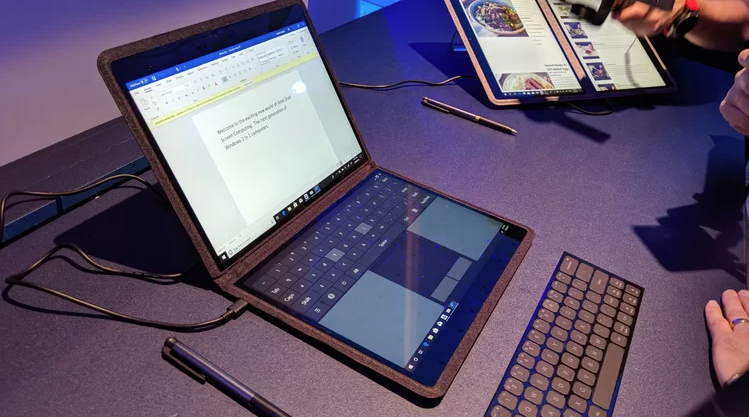Microsoft Reportedly Showing Off Dual-Screen Surface Internally
A dual-screen Surface device is more real than ever. According to a report from The Verge, Microsoft is showing employees the machine internally and had it at an all-hands meeting for the devices team.
The machine, codenamed Centaurus, reportedly attracted long lines of employees. Additionally, The Verge suggests that the device is running Windows Lite, a stripped down version of operating system designed for dual-screen devices. The machine seems to be a larger version of its shelved Andromeda device, closer to the long-canned Courier. And interestingly, the report buries the lede: This device could be coming within the next six months.
Intel has long been pushing two-screened devices. We saw one concept, Twin River, at Computex this year, and it wasn't even the first; it had previously shown off its Tiger Rapids prototype. The report claims Microsoft worked closely with Intel on Centaurus, and that it could be the flagship Windows foldable.
Microsoft also reportedly demonstrated xCloud, which we'll likely learn more about at E3, as well as new version of Microsoft Teams aimed more at your friends and family than your work.
Get Tom's Hardware's best news and in-depth reviews, straight to your inbox.

Andrew E. Freedman is a senior editor at Tom's Hardware focusing on laptops, desktops and gaming. He also keeps up with the latest news. A lover of all things gaming and tech, his previous work has shown up in Tom's Guide, Laptop Mag, Kotaku, PCMag and Complex, among others. Follow him on Threads @FreedmanAE and BlueSky @andrewfreedman.net. You can send him tips on Signal: andrewfreedman.01
-
Giroro Dual Screen laptop concepts have been floating around since at least CES 2010, but they never materialized as a real product for what I would hope are some pretty obvious reasons (much lower batery life compared to single screen, lack of keyboard/trackpad made it almost unusable as a normal laptop, they don't really do anything that a normal laptop can't, nobody asked for it).Reply
Back in 2010, tablets weren't even very good. Now tablets and convertables are excellent, polished, and common.
So the same questions remain:
What does this concept do better than existing laptops/ tablets/ convertables?
If the bottom screen is primarily going to display a keyboard and track-pad, then why should people want that over a normal, cheaper, and more comfortable keyboard?

